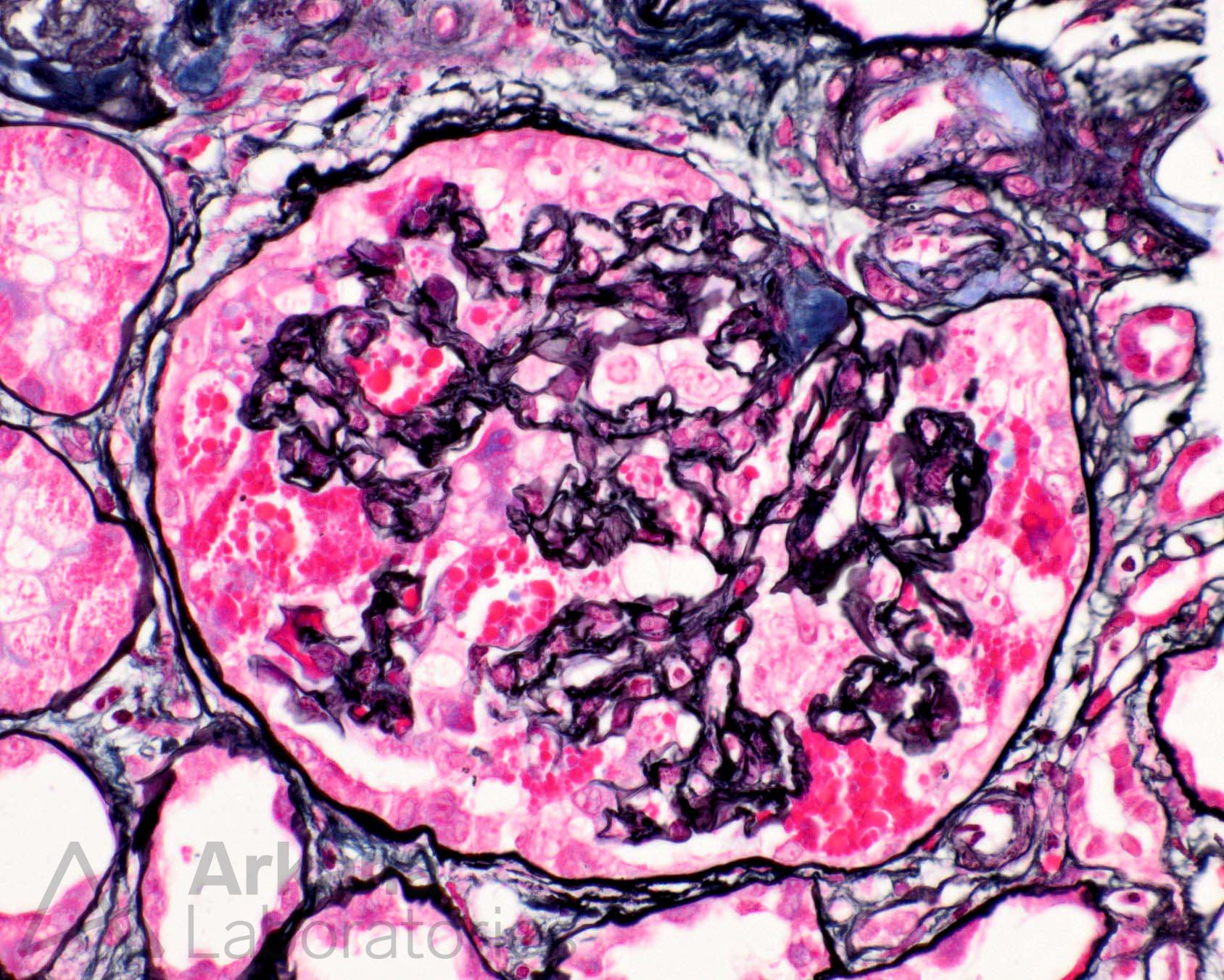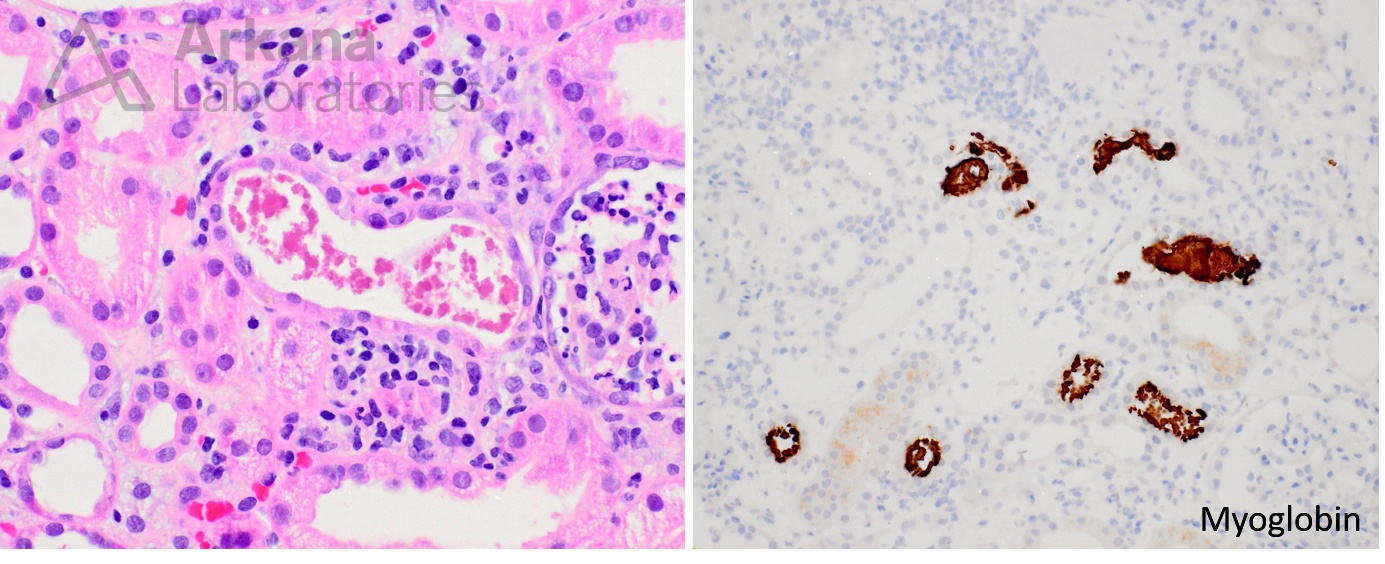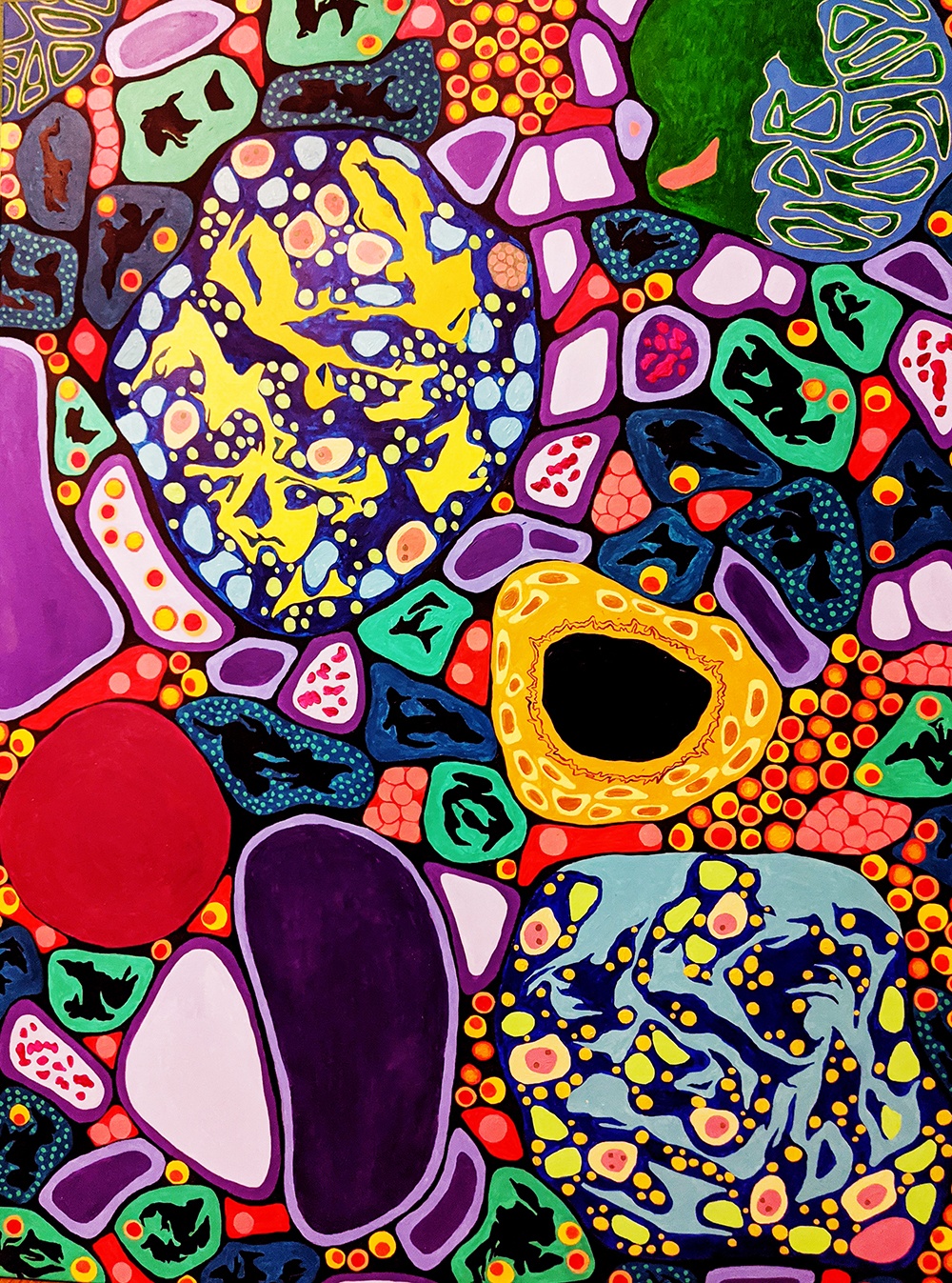Development of acute kidney injury (AKI) in the setting of COVID-19 substantially worsens outcomes, with increased morbidity and mortality, and has been a recent area of investigation. The painting shown above includes two common disease manifestations in the setting of Coronavirus Disease-2019 (COVID19), which include collapsing glomerulopathy and myoglobin cast nephropathy. Histologic images of each of these entities are shown below.
Collapsing glomerulopathy, also known as COVID-19-associated nephropathy (COVAN), is one of the most common causes of acute kidney injury (as well as nephrotic syndrome) in patients with COVID-19. COVAN results from SARS-CoV-2 acting as a ‘second hit’ to individuals with underlying genetic risk due to APOL1 G1 and G2 alleles (Wu et al, 2020; Velez JCQ et al 2020). Up to 14% of African Americans and 1-2% of Hispanic individuals have this genetic risk factor, and therefore, COVAN is a disease nearly restricted to these populations. Other viruses associated with collapsing glomerulopathy related to ‘second hits’ on APOL1 risk alleles include human immunodeficiency virus (HIV), parvovirus B19, and cytomegalovirus.
 SMMT stain showing collapsing glomerulopathy, characterized by collapse of capillary loops, podocyte hyperplasia, and protein resorption droplets in Bowman’s space.
SMMT stain showing collapsing glomerulopathy, characterized by collapse of capillary loops, podocyte hyperplasia, and protein resorption droplets in Bowman’s space.
Myoglobin cast nephropathy occurs in COVID-19 patients due to a necrotizing myopathy resulting from the increased interferon state of SARS-CoV-2 infection (Roman GC et al, 2020). It is characterized on biopsy by acute tubular injury with the presence of eosinophilic beaded and granular casts, which stain positive for myoglobin. Patients present with muscle pain, weakness, rhabdomyolysis, elevated CK levels, and acute kidney injury, and may have concurrent hyperkalemia and oliguria/anuria. In addition to SARS-CoV-2, multiple other viruses have been associated with rhabdomyolysis, including influenza virus B, parainfluenza virus, adenovirus, coxsackie virus, echovirus, herpes simplex virus, cytomegalovirus, Epstein-Barr virus, and human immunodeficiency virus (Sauret et al, 2002).

Hematoxylin and Eosin (H & E) stain of an eosinophilic granular beaded cast, as well as myoglobin immunohistochemistry on the same kidney biopsy.
References:
Wu H, Larsen CP, Hernandez-Arroyo CF, Mohamed MMB, Caza T, Sharshir M, Chughtai A, Xie L, Gimenez JM, Sandow TA, Lusco MA, Yang H, Acheampong E, Rosales IA, Colvin RB, Fogo AB, Velez JCQ. AKI and collapsing glomerulopathy associated with COVID-19 and APOL1 high-risk genotype. Journal of American Society of Nephrology 2020 Aug; 31 (8): 1688-1695.
Velez JCQ, Caza T, Larsen CP. COVAN is the new HIVAN: the re-emergence of collapsing glomerulopathy with COVID-19. Nature Reviews Nephrology 2020; 16: 565-567.
Roman GC, Spencer PS, Reis J, Buguet A, El Alaoui Faris M, Katrak SM, Lainez M, Medina MT, Meshram C, Mizusawa H, Ozturk S, Wasay M, WFN Environmental Neurology Specialty Group. The neurology of COVID-19 revisited: A proposal from the Environmental Neurology Specialty Group of the World Federation of Neurology to implement international neurological registries. Journal of the Neurological Sciences 2020; 414: 116884.
Sauret JM, Marinides G, Wang GK. Rhabdomyolysis. American Family Physician 2002 Mar; 65(5): 907-913.
Quick note: This post is to be used for informational purposes only and does not constitute medical or health advice. Each person should consult their own doctor with respect to matters referenced. Arkana Laboratories assumes no liability for actions taken in reliance upon the information contained herein.


